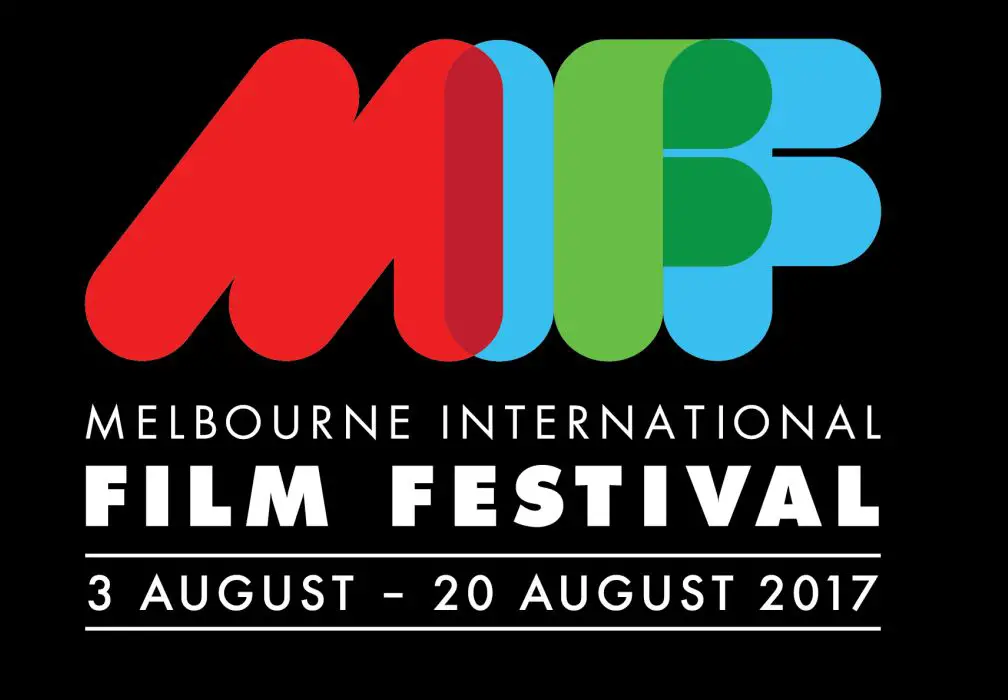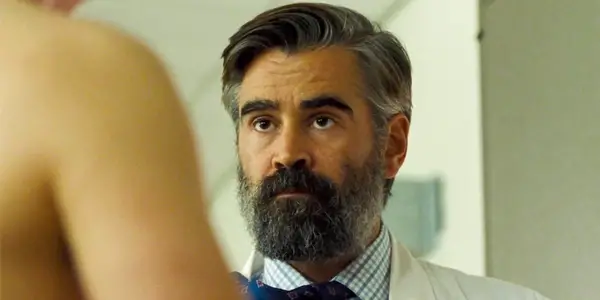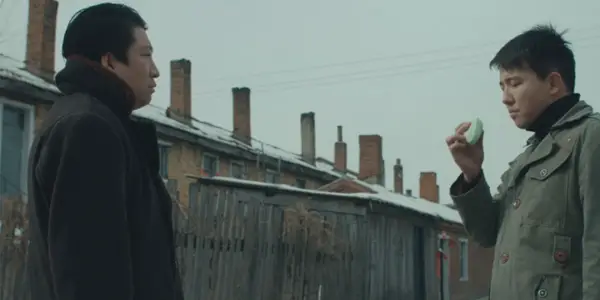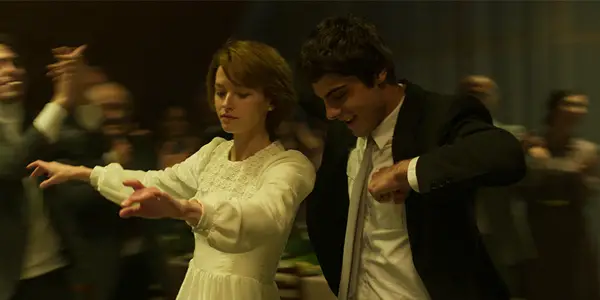Melbourne International Film Festival 2017 Week 3

Alex is a 28 year-old West Australian who has a…
Welcome to the third and final week of the 2017 Melbourne International Film Festival Reports! Unfortunately, my festival experience came to an abrupt end when I came down with a nasty bout of stomach flu, three days before the end of MIFF. Overall my experience at MIFF was quite informative, a great introduction into so many different cultures, styles of films, and filmmakers. Now onto Cinefest Oz!
The Killing of a Sacred Deer

One of the festival’s biggest selections was Yorgos Laminthos‘ highly anticipated follow-up to the incredibly divisive The Lobster, in the form of The Killing of a Sacred Deer. The big debate when it comes to examining The Lobster is – how do you feel about the second half? Depending on your answer to that question will determine your overall enjoyment of the brutal but transparent Killing of a Sacred Deer. Borrowing heavily from the clinically savage filmography of Michael Haneke, Sacred Deer is an experiment in testing your patience. Laminthos pushes his audiences to different degrees of limits, he bravely asks us how much cruelty can we witness and where our morality stands, as he slowly distances us from a stable reality and into an absurd universe.
I’ll keep the plot detailing brief, as one of the film’s strongest aspects is slowly working out what is actually happening and what the real central question at play is. Steven Murphy (Colin Farrell) is a successful heart surgeon, with a regular family life with wife Anna (Nicole Kidman, in her second cinematic pairing with Farrell this year) and their 2 children. Unbeknownst to his family, Steven has been meeting up with Martin (Barry Keoghan, seen earlier this year in Dunkirk), a young student who is an aspiring doctor, who is slowly encroaching into Steven’s life. As more details about the relationship between these two men are unveiled, all hell starts to break loose. Farrell and Kidman continue their new streaks of doing great work in independent cinema, a nice change from the typical Hollywood roles that they’ve had to perform throughout their respective careers.
With his last three films, Laminthos has displayed a real distinctive cinematic style, one which infuses black comedy, ludicrous exaggerations of society, and extreme violence. The Killing of A Sacred Deer is the most forthright of these three, a mechanically savage slice of cinema that feels so obvious in its intentions, delivered in a real deliberate style that is starting to feel tired at this point. An opening discussion about wristwatches immediately sets the off-kilter tone, where characters talk in practicalities and non-sequiters, which comes into conflict with the grounded, tactile aesthetics that they’re presented with.
Whereas The Lobster was set in a nondescript future, which meant that all the farcical characters and dialogue blended with the world much more naturally, most of the abnormal elements in Sacred Deer feel forced and distracting. A third act shift into some more dramatic territory sheds these superficial quirky qualities, and this is the moment where the film gets considerably better. The descent into viciousness feels predictable, lacking the surprising qualities that made The Lobster and Dogtooth so staggering. Much like the common criticism of Tarantino’s latest films, all the beats are enjoyable to watch, but struck the nagging feeling of being more of the same.
Marjorie Prime

One of the toughest types of entertainment to interpret for the screen is theatre, trying to find the balance of honouring its dramatic origins but also using the vehicle of film to expand on unexplored physical and narrative options. Majorie Prime, Michael Almereyda’s latest film based upon his own play, unfortunately never steps outside of his theatrical nature, but this doesn’t diminish its compelling and well-acted story. The low-key setting and strong focus on character interactions makes this a perfect Netflix viewing experience, so much so that I’m shocked that the streaming service didn’t pick it up at some point.
Much like Spike Jonze’s Her, both aesthetically and narratively, Majorie Prime is set in an undetermined future, using a basic sci-fi foundation to explore some real dramatic humanistic terrain. 86-year-old Marjorie (Lois Smith, who debuted the role on stage), spends her remaining days interacting with a computer-generated projection of her late husband, a newly-founded type of avatar technology that are called Primes. The younger version of her late husband is played by Jon Hamm, which is an example of absolute perfect casting. His old-school charm that was displayed so well in Mad Men is back again here, a mixture of anachronistic mannerisms and general good looks. As Marjorie’s sole daughter Tess (Geena Davis) worries about the Prime’s presence in her life, she and her husband (Tim Robbins) slowly realise its potential of subtle consolation during Majorie’s final moments on Earth.
Due to the thought-provoking nature of the slowly unfolding plot, which relies on a series of repeated memories recounted to different characters, 95% of the action involves 2 person conversations with no movement. This is where its theatrical origins are so evident, the sparse environments allowing a tighter emphasis on allowing the actors to project and make these interactions feel genuine. But seeing these projected on a big screen, especially when the fundamental plot moves so leisurely, does erode the cinematic experience of the movie, as moments of great acting and interesting plot developments start to feel incredibly laboured after a while.
Another questionable aspect about the film’s translation to screen is its diversions into horror movie territory, especially due to Mica Levi’s brooding score. Levi, who has quickly made a name for herself with a series of real intense and fierce film scores, does create another memorable entry here, but it completely clashes with what’s being depicted on-screen. On a plot and thematic level, the story never delves towards more darker or horrific areas, despite Levi’s score suggesting so. Even some of the few times that the cinematography breaks its pattern of standard 2-shot compositions, it frames the Prime character in a particular way to indicate a much more menacing side to him, an angle that is never explored or relevant to the central story being told. Thoughtful and original pictures like this should be watched in this current climate, but a cinematic viewing is not necessary.
Free and Easy

One major observation I’ve made during MIFF is how presenting banality has become such a major comedic tool now; characters with an ironic detachment to reality and the narrative at hand always seem to generate huge bursts of laughter from these festival crowds. Four films in this list: Free and Easy, The Killing of a Sacred Deer, Claire’s Camera and Glory scored big by simply having characters exchange natural, stilted dialogue with each other, even if what they’re saying has absolutely nothing to do with the plot. Now Jun Geng’s Free and Easy is an absurdist comedy, so abstract characters and a disconnection from reality is expected, but after a while, when a film gives you absolutely nothing to invest in or build towards, you’re left with the feeling of – if you don’t care, why should I?
Free and Easy starts off with Zhang Ziyong (Zhang Ziyong), a con-man who uses the guise of a travelling soap salesman, who descends upon an unnamed barren Chinese town to fleece each of the unsuspecting villagers. Some of the more prominent members of this ransacked village include a Buddhist monk (Xu Gang), who might just be a bigger conman than Zhang, an innocent Christian man looking for his long-lost mother, and a pair of foolish cops who start to pick up on the trail of victims left by Zhang. Despite its formal introduction, this is quite a loosely structured story, bouncing between a series of surreal exchanges, with most of the comedy coming from the continuous notion of stoic responses to absurd gestures. Think of the straight-faced comedy of Roy Andersson with the visuals and characters of Jim Jarmusch’s earlier works.
The husk of a former town that our characters inhabit gives a nice backdrop for some real great compositional imagery, but also acts as a simplistic background to allow the exaggerated characters to have room to really stand out. In-between the bouts of deadpan comedy is some pretty amazing panoramic shots, which also add to the heightened reality that our bizarre characters inhabit. Unfortunately, these moments of amusing banality are spread out too thinly, and without a traditional plot to keep the film’s momentum kicking, it does eventually run out of gas. All the established plot strands never come together, some completely discarded, which all leads to a surprisingly flat ending. What should’ve ended in fireworks unfortunately ends like a firecracker in a bathtub.
Hostages

Hostages is a cinematic biopic at its most explicit and clinical, purely presenting the people affected and their actions in the least biased fashion possible, removed of any emotion or favoritism towards its subjects. Hostages is Rezo Gigineishvili’s tense retelling of the infamous Georgian 1983 plane hijacking incident, a slick thriller that has the blood of prime Costas-Gavras in its veins (with this feeling like a spiritual sequel to Z). The lack of emotional dissection of the main characters might make the film feel too cold and distant for some, but as a raw, bloody, and incredibly authentic recount of the attempted hijacking, Hostages is pretty damn effective.
A group of 7 young Georgian students (their real names changed here), all from elite and privileged backgrounds, secretly plotted to hijack a small airliner in order to escape the current overbearing KGB rule. Under the guise of flying to Leningrad for a post-wedding party, the poorly thought-out plan falls apart pretty quickly on the plane, leading to an anxious stand-off between the surviving kids, a plane-full of hostages and a pissed-off group of Soviet special forces. There is no strong analysis behind the reasons for the students’ dissatisfaction and the film never forces you to feel sorry for those involved. It just simply displays the absolute mess that occurred and allows the audience to choose what they personally think of what happened.
This tactical approach makes the botched hijacking genuinely compelling, displaying the violent chaos through some careful crafted cinematography that transplants the audience right next to the doomed teenagers. Gigineishvili keeps his cards close to his chest, so those unaware of the actual story are left watching the snowballing brutality unfold, oblivious to who actually made it out and how. As someone who didn’t know the true story going in, I felt that Gigineishvili effectively translated this tragic story into a taut thriller that never cheapened or exploited its central subjects for cheap emotional moments or generic cinematic analogies.
Claire’s Camera

Hong Sang-Soo’s Claire’s Camera feels more like a playful experiment rather than a proper feature film. This is Sang-Soo’s second picture this year to star Kim Min-Hee that is a meta deconstruction of his real life affair with Min-Hee. The other film is On the Beach at Night Alone, which is a much more dramatic analysis of the life of an actress who is caught having an affair with a high-profile director. Claire’s Camera has all the elements that ought to delight arthouse audiences just from their presence alone – Kim Min-Hee (hot off The Handmaiden) and Isabelle Huppert hanging out with the backdrop of the Cannes Film Festival.
What we get is 69 minutes of the exact same type of shot: two characters meet, are framed in a flat mid-shot, have a pretty monotonous conversation and then moving on. The Cannes scenery is barely used, and all the dialogue exchanges share the same consistently stilted tone that they always feel like bad small talk you’d overhear in the first round of speed dating.
Attending Cannes Film Festival as a film sales agent, Jeon Manhee (Kim Min-Hee) is shocked to learn that she has been fired due to a one night stand with the director of the film she’s selling. Meanwhile, spirited but aloof teacher Claire (Isabelle Huppert), who is obsessed with capturing every moment with her Polaroid camera, notices Jeon’s loneliness and decides to strike up a conversation. This conversation develops into a culture-crossing friendship, one which sees the newly-united pair cross the paths of Director So (Jung Jin-young), the emotionally distressed man who has just learnt of his role in Jeon’s unfair termination.
The film’s brief 69-minute running time contributes to its fleeting feeling, but the major problem is its technical aspects. The camera keeps reiterating the same shot, which is obviously a purposeful move, but one that gets tiring quickly once you catch onto its deliberate nature. Other faults which make this feel like a disposable cinematic experiment include a myriad of production issues, such as dialogue that is frequently cut off by unfiltered wind, inconsistent lighting, and even a scene where an extra looks at the camera and waves.
Any form of varied camerawork might’ve shaken up the incredibly dull nature of the on-going conversations, especially when everyone talks in such broad generalities, to the point where it all feels so artificial. A frequent amount of pregnant pauses are inserted to make these discussions seem authentic, but the synthetic feel of what they’re actually saying drains any form of sincerity from them. Some might be amused by the goofy nature of the whole thing, but I couldn’t shake the feeling that with a bit more polish and fleshing out, this could’ve been a real heartwarming escapade.
Glory

Glory is one of the most perfect translations of the frequently-referenced ‘Coen Brothers‘ style that is so often tagged to any drama film with the slightest hint of quirk. One of the key elements of all of the best Coen Brothers movies is the sense of escalating dramatic intensity, having one simple object or action multiply into a much larger scenario featuring a myriad of different characters who are drawn into the chaos. Where The Big Lebowski had a stolen rug, Glory has a lost watch be the source of disaster.
Tzanko Petrov (Stefan Denolyubov), a quiet but diligent railroad worker, is making his daily rounds when he stumbles upon a lost stash of millions of dollars. Immediately turning his findings to the authorities, he is automatically hailed a hero, a tactical move made by the transport industries PR agency, led by workaholic boss Julia Staykova (Margita Gosheva). Exaggerating Petrov’s deed in order to deflect growing rumours of corruption and budget cuts, Julia takes Tzanko’s beloved heirloom watch in order to reward him a new one in a lavish press event. When Julia loses Tzanko’s watch, he starts a determined campaign to obtain his missing antique, a deed which equates into some real cataclysmic resolutions.
Our leading man, Tzanko Petrov, is such a unique, but incredibly relatable protagonist. Stuck with an unfortunately heavy stutter that makes any form of casual conversation quite difficult, Petrov isn’t your usual main character, which already makes Glory feel refreshingly original. The narrative’s run-time is split between Tzanko and Julia, who is given some humanising qualities that actually makes her feel like an actual character, a nice revision from the blunt characterisation issues that have plagued quite a few of the other politically-driven MIFF films. Whilst the marketing materials might mark this as a black comedy, I wouldn’t go in expecting one. Instead this is a tight, intelligent drama that builds its intensity in a real smart and organic fashion; with that, I have no problems declaring this as one of my favourite films of the festival.
What are your thoughts on any of the films described?
Does content like this matter to you?
Become a Member and support film journalism. Unlock access to all of Film Inquiry`s great articles. Join a community of like-minded readers who are passionate about cinema - get access to our private members Network, give back to independent filmmakers, and more.













